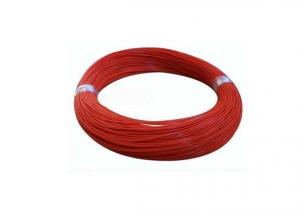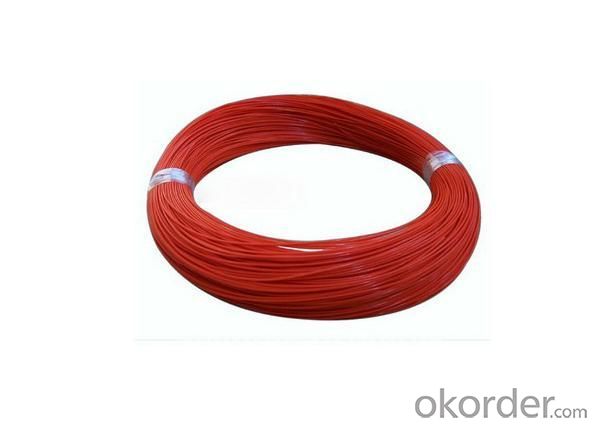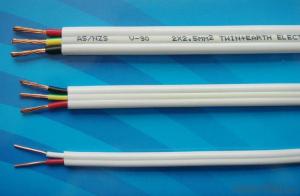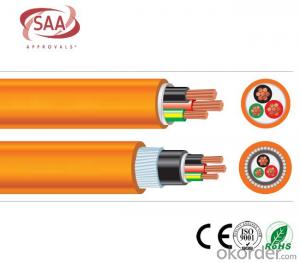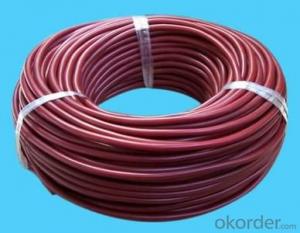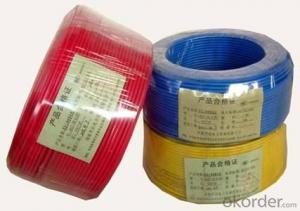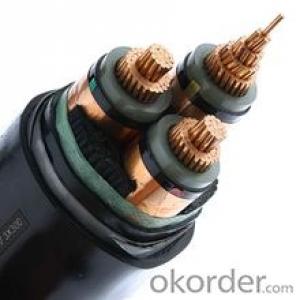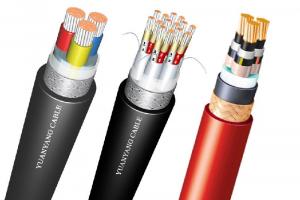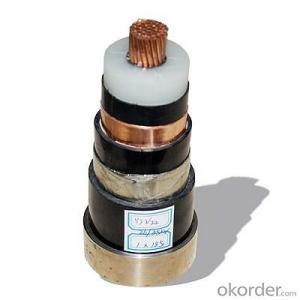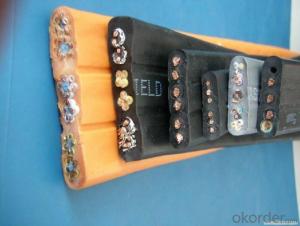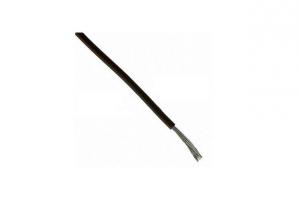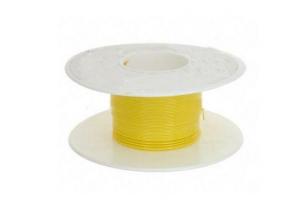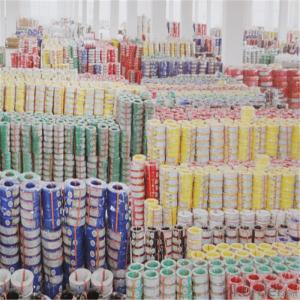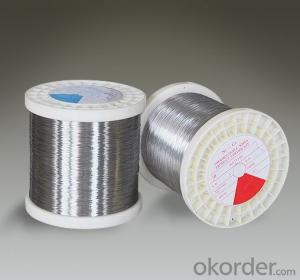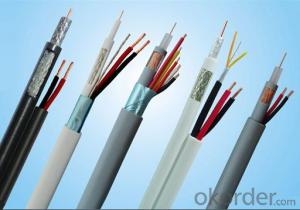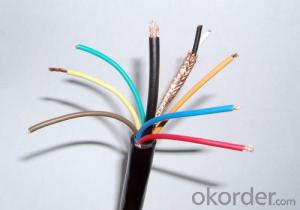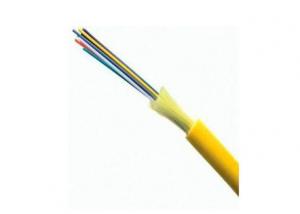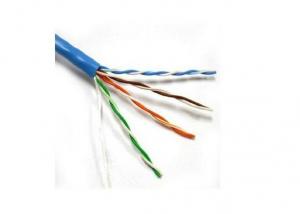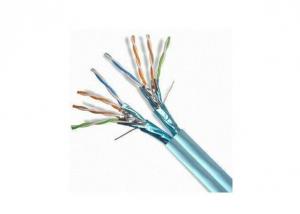Teflon Wire UL1591
- Loading Port:
- China Main Port
- Payment Terms:
- TT or LC
- Min Order Qty:
- 1000 Meters m
- Supply Capability:
- 300 Kilometers per Month negotiable m/month
OKorder Service Pledge
OKorder Financial Service
You Might Also Like
*Rated temperature: -100~+200°C; -100~+250°C.
*Rated voltage: 300 volts, 600volts
*Conductor: Solid or stranded, silver plated copper or tinned copper conductor
*Size: 10 ~ 30 AWG..
*Insulation: PFA or FEP, with optional color schemes such as transparent, white, black, red, blue, grey, yellow, green, brown, orange, yellow-*green and red-white etc.
*Resistant to acids, alkalis, oils, flame retardant, fire resistance, and low smoke, no halogen.
Applications:
Widely applied in Electronic instrument & device, electrical appliance, lighting equipments, leads for transformer & electrical motor, air-conditioner,microwave oven, electric products, electric heater, oven, electric factory, various motors and so on.
- Q: Hydropower transformation with a few square of the wire is good? Recommend a good brand?
- The middle of the partition with the inside there may be weak electrical cable, and strong electric cable separate.
- Q: A) Faulted electrical wiring can lead toB) Faulty electrical wiring can lead to
- B is correct faulty is an adjective to describe a noun (electrical wiring) faulted is a verb.
- Q: The socket has yellow and blue gray three colors, which is the line of fire? Which is the zero line? Which is the ground?
- It is a normal phenomenon This is a leakage phenomenon, not the case of ground, high-power metal shell electrical leakage phenomenon will be MacBookPro standard is a three charging plug, a two-pin plug, a triangular plug, a triangular plug The extension of the line with the two feet will be inserted into the phenomenon of leakage with triangular plug There may also be leakage phenomenon, because: 1
- Q: Adventure Island game in the Qi Nepal's Lloyd research mission where to play the wire bag where to play?
- Apple's mobile phone software BUG, try this method, so good to go after the sale! 1) to open the device 2) into the system 3) insert the data line 4) see the "This cable or accessories have not yet been certified, it may not work with this iPad reliable" tips, do not point anything including buttons, direct pull Out of data lines. 5) insert the data line, you will see the prompt, then close the warning message.
- Q: i have to do all 20 chapters and I was wondering if there was a site where I could find all the answers for each chapter and not read the book?only relpy if you know of a site that could do that for methanks
- This is a VERY scary question! Please, post your full name and address so that I don't hire you by accident to do any electrical wiring in MY house!
- Q: Every few months between 2am - 5am we are awaken to a electrical/fire burning smell. It only last about a minute and then it starts fading. We get up trying to locate it but with it only lasting a minute we can't pin point it. We unplug everything and smell all the electrical outlets and there is nothing. What else should we try?
- Oh my G-d! Someone in your house is using his brain after a long-long time. No seriously I'm sure it must be that defrosting refrigerator.
- Q: Hello,I'm attaching a 12/2 wire to a new light fixture. The fixture has the white, black, and bare wire. The 12/2 wire also has white, black and bare wire. I've connected them together using wire nuts and then electrical tape.But the instructions say this: Helpful Hint: Attach copper ground wire to grounded outlet box.What does this mean? There was a screw that says ground on the light fixture. Do I need to attach the wire to this screw, PLUS connect the 2 bare wires together? Or can I just connect the bare wires together only?Background info: This house was built in 1998 if that helps. Also, this project is simply replacing the light fixture in a closet that I've moved about 3 feet. Just a standard light, nothing fancy.Thanks!
- The black wire is the hot wire, the white one is neutral, and the bare or (sometimes green) wire is always conneted to the ground point. Connect all the like colored wires together, and connect the bare copper wire to the rest of the bare copper ones.
- Q: I am going through an apprenticeship program to become a journeyman but I am also going to school to become an electrical engineer and I was wondering if this apprenticeship program will help me while I am getting my electrical engineering degree, should I consider it as job experience or is it a waste of time? And I would really like to know what is the difference between an electrician and an electrical engineer? Does anyone know of any electric company's that hire interns or have apprenticeships for aspiring electrical engineers?
- In addition to what everyone else said here, electrical engineer's also design circuit boards, create code to run in Microcontrollers, design all of the test set hardware and software to test our circuits they design, design mangetics (transformers, inductors, etc.), build and test prototypes of elctronics.the list goes on and on. Just wanted to let you know that an electrical engineer's field of knowledge and applications to use it in is vast.
- Q: I have soundstorm laboratories 70W X 2 High power Amplifier. I have no clue to where i should put the electrical wire. It says +12v, REM, and GND.
- Ok here we go. The 12v should run directly from the positive terminal from your car battery or a 12 VOLT source. The gnd is Ground and should be attached to a bolt any bolt near the amplifier that comes in contact with bare metal in the car that connects to the cars frame. The rem or remote wire should be connected to your car stereo. This is normally a blue wire that sends a signal charge to your amp every time your car turns on so that your amp turns on and off according to if your stereo is on. Hope this helps LIMBO
- Q: I have a small John Deere tractor i keep at my lake lot. I have a big problem with rats chewing up the wiring. They have gone as far as getting into storage shed, get into the range cubes i keep for cattle feed and make a nest under the hood of the tractor.Is there any kind of electrical tape to wrap the wires with to keep them away. They chew not just threw the insulation, but even the copper wire.
- Put out rat bait
1. Manufacturer Overview
| Location | Henan,China |
| Year Established | 1997 |
| Annual Output Value | |
| Main Markets | North America South America Eastern Europe Southeast Asia Africa Oceania Mid East Eastern Asia Western Europe |
| Company Certifications | CCC;ISO9001-2008;SGS |
2. Manufacturer Certificates
| a) Certification Name | |
| Range | |
| Reference | |
| Validity Period |
3. Manufacturer Capability
| a) Trade Capacity | |
| Nearest Port | |
| Export Percentage | 81% - 90% |
| No.of Employees in Trade Department | |
| Language Spoken: | |
| b) Factory Information | |
| Factory Size: | 50,000-100,000 square meters |
| No. of Production Lines | Above 10 |
| Contract Manufacturing | OEM Service Offered |
| Product Price Range | |
Send your message to us
Teflon Wire UL1591
- Loading Port:
- China Main Port
- Payment Terms:
- TT or LC
- Min Order Qty:
- 1000 Meters m
- Supply Capability:
- 300 Kilometers per Month negotiable m/month
OKorder Service Pledge
OKorder Financial Service
Similar products
Hot products
Hot Searches
Related keywords
